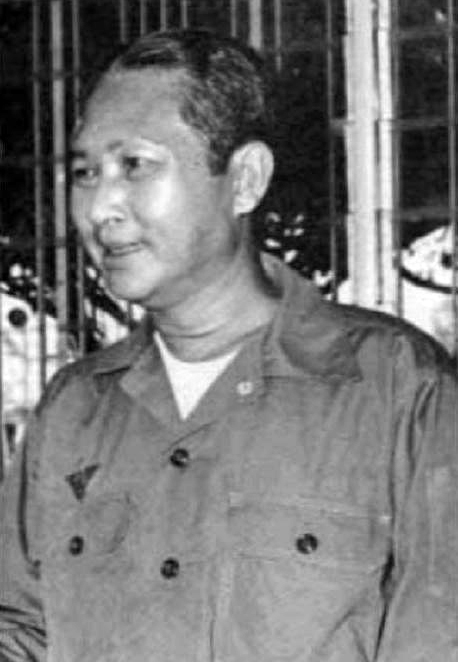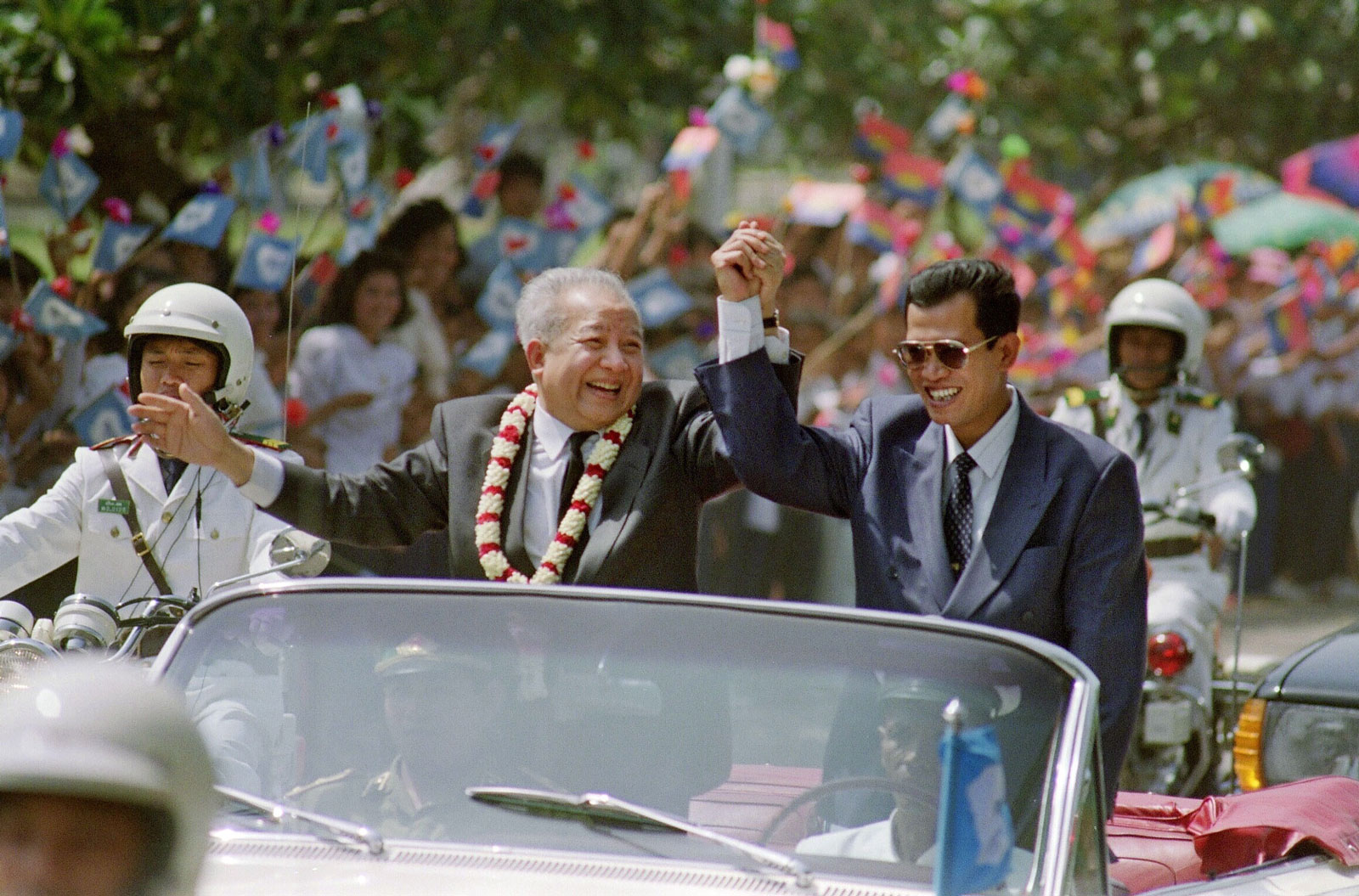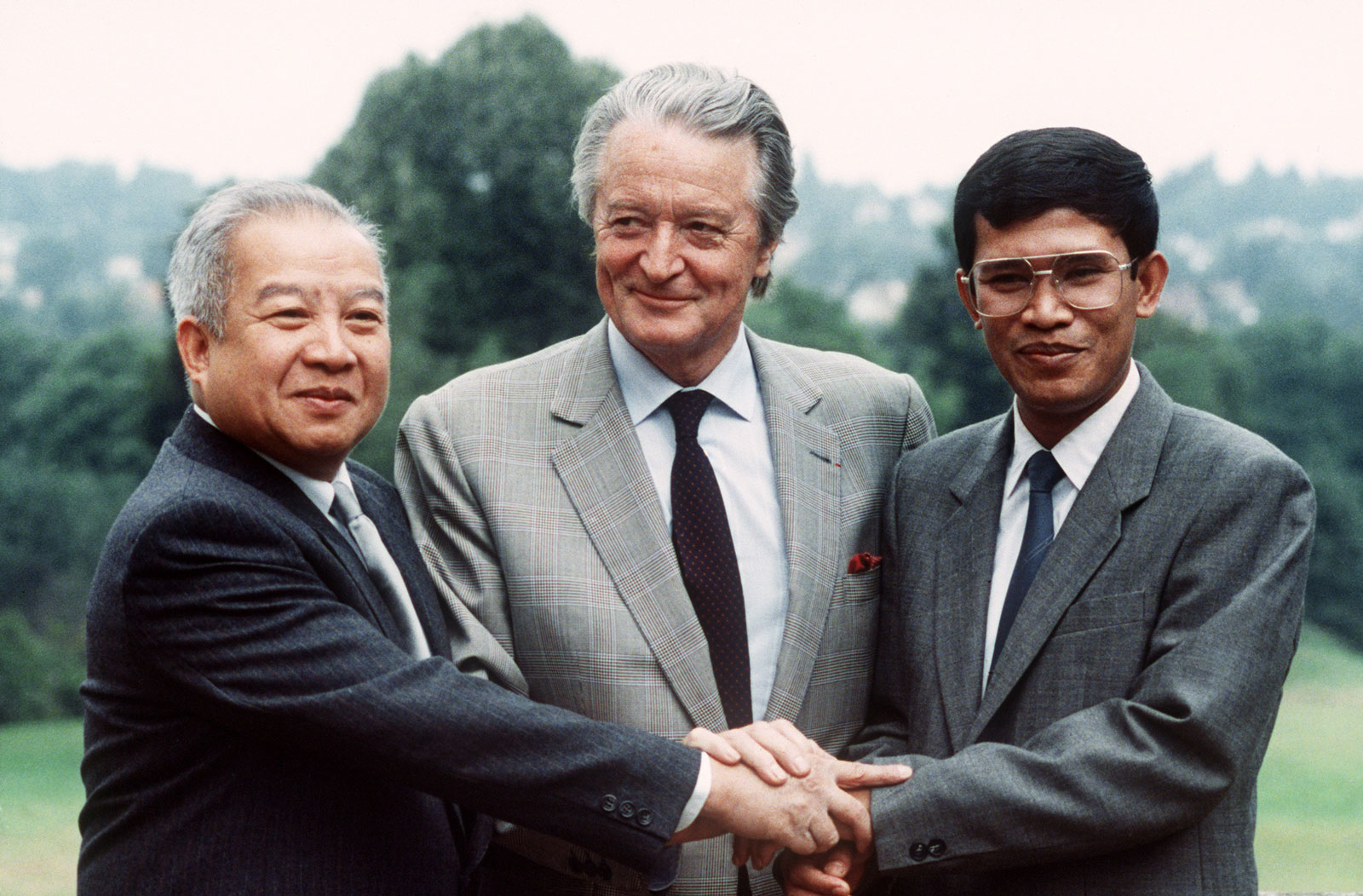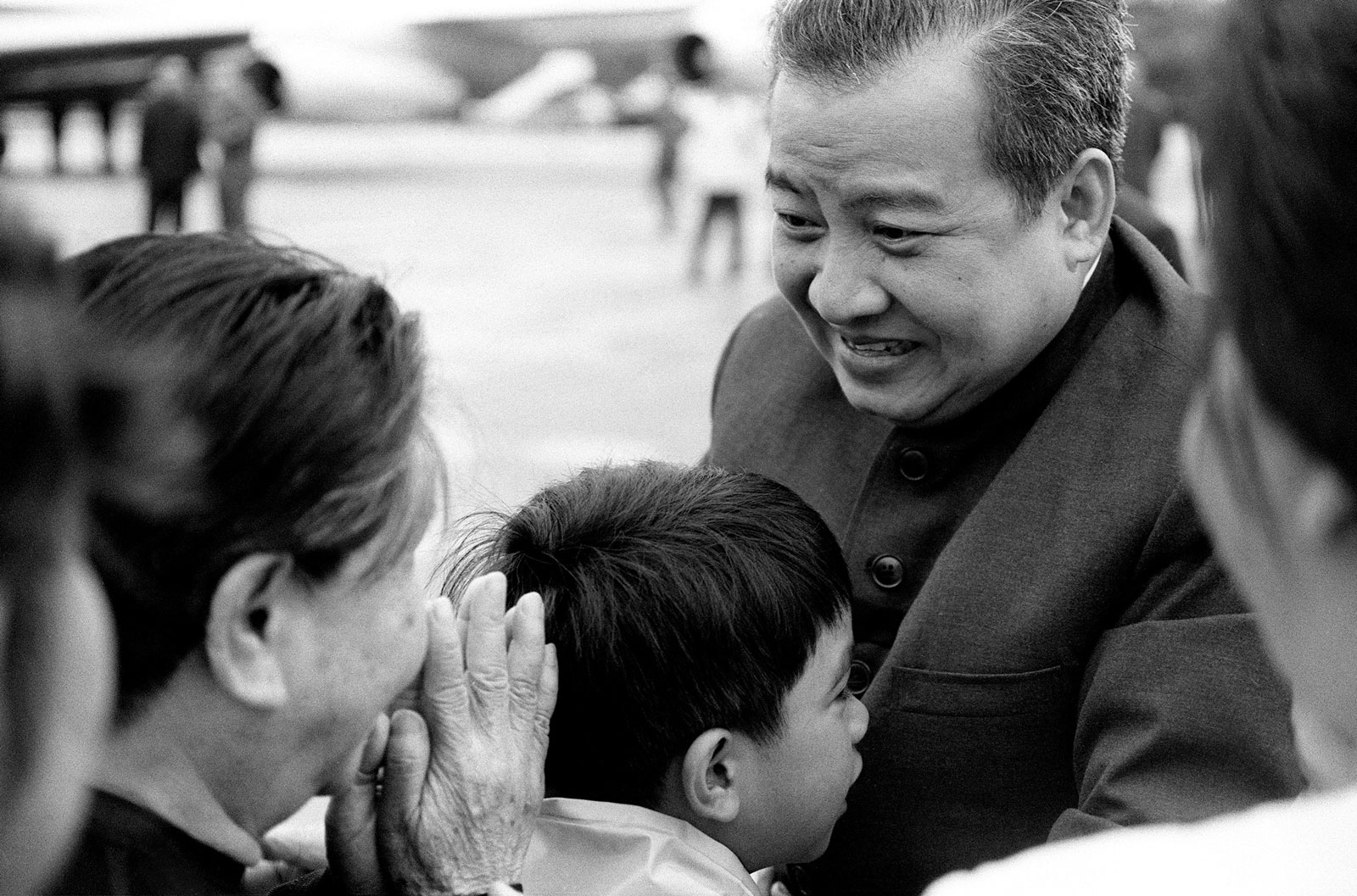March 18, 2020 marks 50 years to the day that Prince Norodom Sihanouk was officially removed from his role as Cambodia’s head of state, displaced by his former prime minister and military general Lon Nol in what has become known in popular memory as a US-backed coup d’etat.
Arguably the single most consequential act of Cambodia’s 20th century history, the basic arc of events that followed in the decade after the 1970 overthrow have become well-known to most. But the legacy of this change in leadership is still unfolding to this day – with its full connection to Cambodia’s current political landscape seen in subtle parallels in terms of context and leadership.
French historian Henri Locard is aware that his narrative of this momentous shift in the country’s politics is contrary to the opinions of other experts, and even Wikipedia, but he asserts the events of March 18, 1970 should not be called a coup.
Locard, who has been in and out of the Kingdom since the early 1960s, and is now a professor in the history department at the Royal University of Phnom Penh, has long argued that several factors disqualify Nol’s takeover from that particular status.
“If you say that it is a coup d’etat, it has dramatic consequences,” Locard said. “It means that the Khmer Rouge were the legal holders of power from 1975 [because they toppled an illegitimate Lon Nol government], and they’re recognised by the United Nations until 1990. Which is absolutely preposterous.”
After his ouster from the government, Sihanouk, in exile in Beijing, declared his support for the nascent Khmer Rouge, then still a communist insurgency in the Kingdom’s rural north. In doing this, he became head of a Chinese-backed government-in-exile.
Back in Cambodia, Nol formed the Khmer Republic, an increasingly authoritarian military state devoted to stopping the communists and solidifying nationalist rule amidst the clash of powers unfolding in neighbouring Vietnam between North and South.

A lot of people today look back at the coup in the 1970s as the point where everything started to go wrong … It’s the point at which, the politics of unity that Sihanouk tried to maintain collapsed into a period of confrontation
Sebastian Strangio, author of Hun Sen’s Cambodia
The young republic proved unsuccessful on both fronts. Five years after he toppled Sihanouk, Nol himself was forced to flee the country before a wave of Khmer Rouge soldiers entered Phnom Penh in April 1975. From 1975 to 1979, the country was plunged into its national nightmare, and by the time the Khmer Rouge was in turn forced from power in January 1979 by Vietnamese troops, an estimated 1.5 to 2 million people had perished in what was then Democratic Kampuchea.
But unlike the military conquest of the Khmer Rouge, Locard argues, Lon Nol’s rise to power was constitutionally sound.
Sihanouk had been king of Cambodia from 1941 to 1955, at which point he abdicated the throne to his father, Norodom Suramarit, to serve in politics as a semi-civilian. Locard therefore points to a constitutional amendment – approved by the Cambodian National Assembly after Suramarit died in 1960 and backed by Sihanouk – that allowed for someone else to be chosen as the country’s leader if there was no clear successor for the king.
While there were other possible successors lined up when Sihanouk fell out of power in 1970, including the eldest son of former King Sisowath Monivong, the earlier amendment was used to justify Lon Nol’s new position as head of state. Secondly, though an overwhelming amount of violence followed in the years after, the 1970 shift in power was not marked by bloodshed and was in fact the result of a unanimous vote in the National Assembly to remove Sihanouk on March 18, 1970.
Regardless of the label given to what happened in 1970, it set in motion a series of events that have defined modern-day Cambodia.
For what it’s worth, Sebastian Strangio, author of political history Hun Sen’s Cambodia, accepts the description of Sihanouk’s replacement as a coup, adding that the upheaval paved the way for a long decline into the madness of the Khmer Rouge years.
“A lot of people today look back at the coup in the 1970s as the point where everything started to go wrong”, Strangio said. “It’s the point at which, the politics of unity that Sihanouk tried to maintain collapsed into a period of confrontation.”
The Sihanouk years are often looked upon as a “golden era” for Cambodia, when the newly independent country experienced a flourishing in the arts, much of which was funded by the king himself. But his rule was also under a one-party system dominated by the Sangkum, his broad-based coalition movement.
Strangio described Sihanouk’s hold on power as a “precarious balancing act” that used patronage, intimidation and outright violence to maintain an increasingly unstable peace between very different political ideologies on the right and left.

Beyond domestic tensions between opposing factions, Sihanouk’s ousting also came at a time when the tectonic plates of geopolitics were colliding in Southeast Asia. War in Vietnam was creeping over the border under Sihanouk’s watch, and much of Cambodia’s educated upper-crust had already become frustrated with the perceived deference to China shown by their head of state.
“Sihanouk was at the feet of Mao”, Locard argued. “All the Cambodian elite didn’t like that at all.”
When Sihanouk left for France in January of 1970, before the takeover, he rode unaccompanied to the airport, a rarity for royalty. He settled down in a modest French villa, a far cry from the lavish lifestyle he was used to, in the process of realising he was “going the wrong way with the cultural revolution” in Cambodia, as Locard describes his overemphasis on Chinese affairs.
When a Cambodian delegation travelled to visit him in France, he refused to even see them, issuing threats until they left the country.
I can tell you from when I was here in the mid-60s, it’s exactly the same picture as today with Hun Sen
Henri Locard, a Cambodia-based historian
Locard was in Cambodia at the time, and testifies to the palpable air of frustration among many people.
“Not just from what I read but from my experience, the situation was that Sihanouk had become very unpopular with the elite”, said Locard. “[But] he was still very popular in the countryside.”
In present day Cambodia, Hun Sen has received a fair deal of criticism, much of it from upper-class educated Cambodians, diaspora and expats for similar pro-China propensities – made even more crystalline by his response to coronavirus, during which he refused to stall flights and trade between Cambodia and Beijing at its outbreak.
This pro-China stance has brought significant economic value to Cambodia over the past decade, as China remains the country’s largest source of foreign direct investment – a staggering total of nearly $3.6 billion in 2018. But it has come at a cost, skewing perceptions of Hun Sen’s government both inside the country and on the international stage.
“I can tell you from when I was here in the mid-60s, it’s exactly the same picture as today with Hun Sen,” said Locard, explaining that the educated elite hold a similar resentment to the growing, dependence on a foreign power.
Strangio is also quick to compare Cambodian leaders past and present. He’s in the past drawn parallels between Hun Sen and Sihanouk, namely in the method of “rule with patronage, personality, using public address”, in addition to a certain proclivity to single-party rule backed by the threat – be it quiet or explicit – of violence.
If Hun Sen should follow a pattern of rule set long before him, Strangio follows, it would make sense that he would carefully study the lessons imparted by his predecessors.

“In a way, this functions in contemporary politics as a reminder of what can go wrong,” Strangio said of the Lon Nol case study.
He added that, given its relevance both in the historic cycle of Cambodian governance and as one possible catalyst for the Khmer Rouge years, the event is used as a rhetorical tool by the current government that “looks back at the coup as the point which the country entered the abyss”.
The author said this is useful for the political establishment, to draw back on Cambodia’s history as laden with potential for violence and catastrophe as a warning against any political transition today.
While he deferred to Locard on matters of historical argument, Strangio didn’t necessarily believe the definition of whether it’s a coup or not mattered all that much.
Regardless of the parliamentary procedure used to remove Sihanouk, the upheaval caused by his sudden exit – and significantly his public call for resistance and endorsement of the communist insurgency – drove momentum for the Khmer Rouge that forever changed the course of Cambodian history.
“Regardless of what one calls it, if we’re looking at its [the toppling of Sihanouk] effects as a political event, it doesn’t change anything”, he said.
“The way the Hun Sen government is looking at it, the removal of [Sihanouk] from office, regime change, if you will – that precipitated all the horrible things that followed. Whether those things would have happened either way is something that’s impossible to know.”


